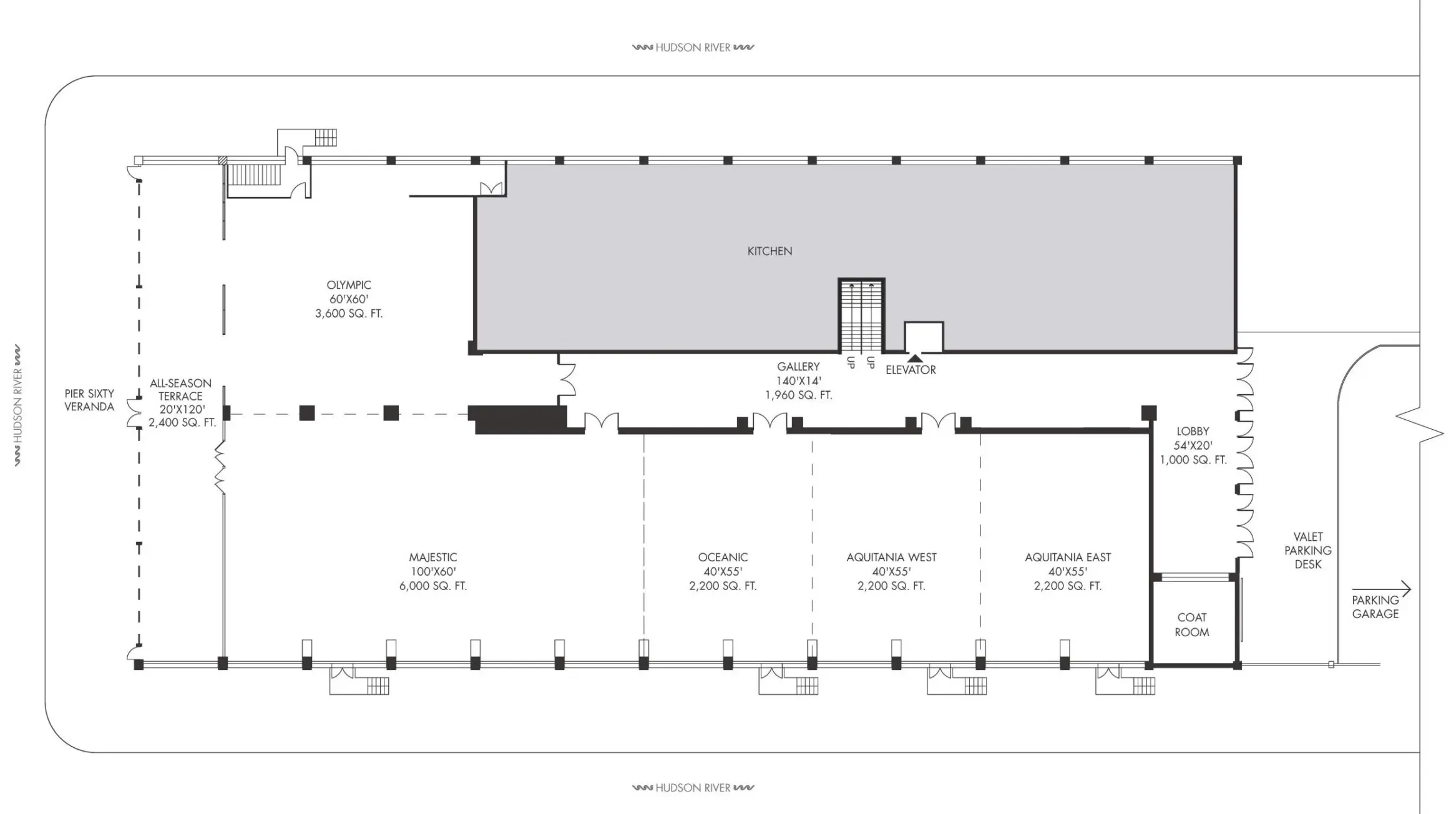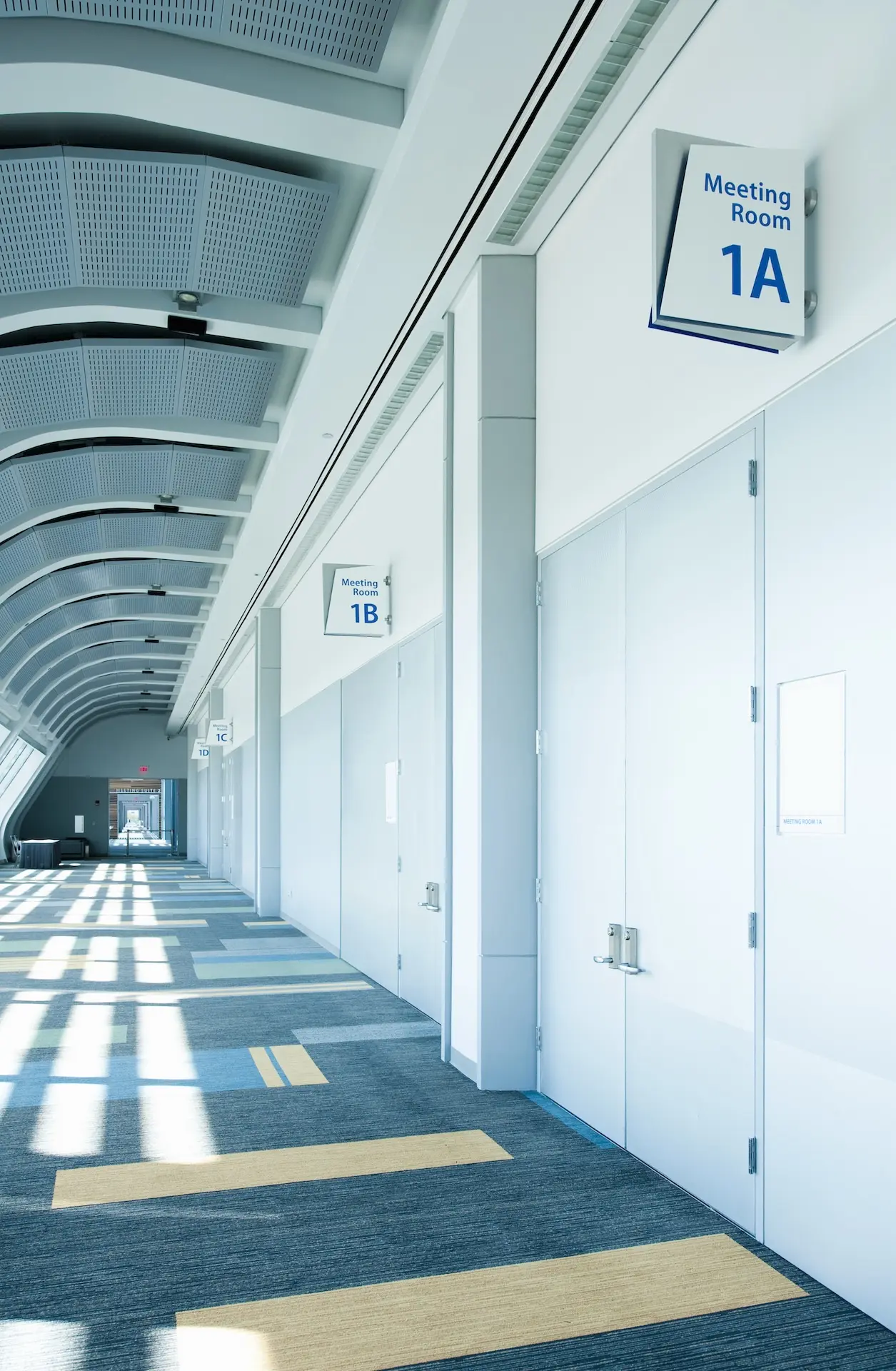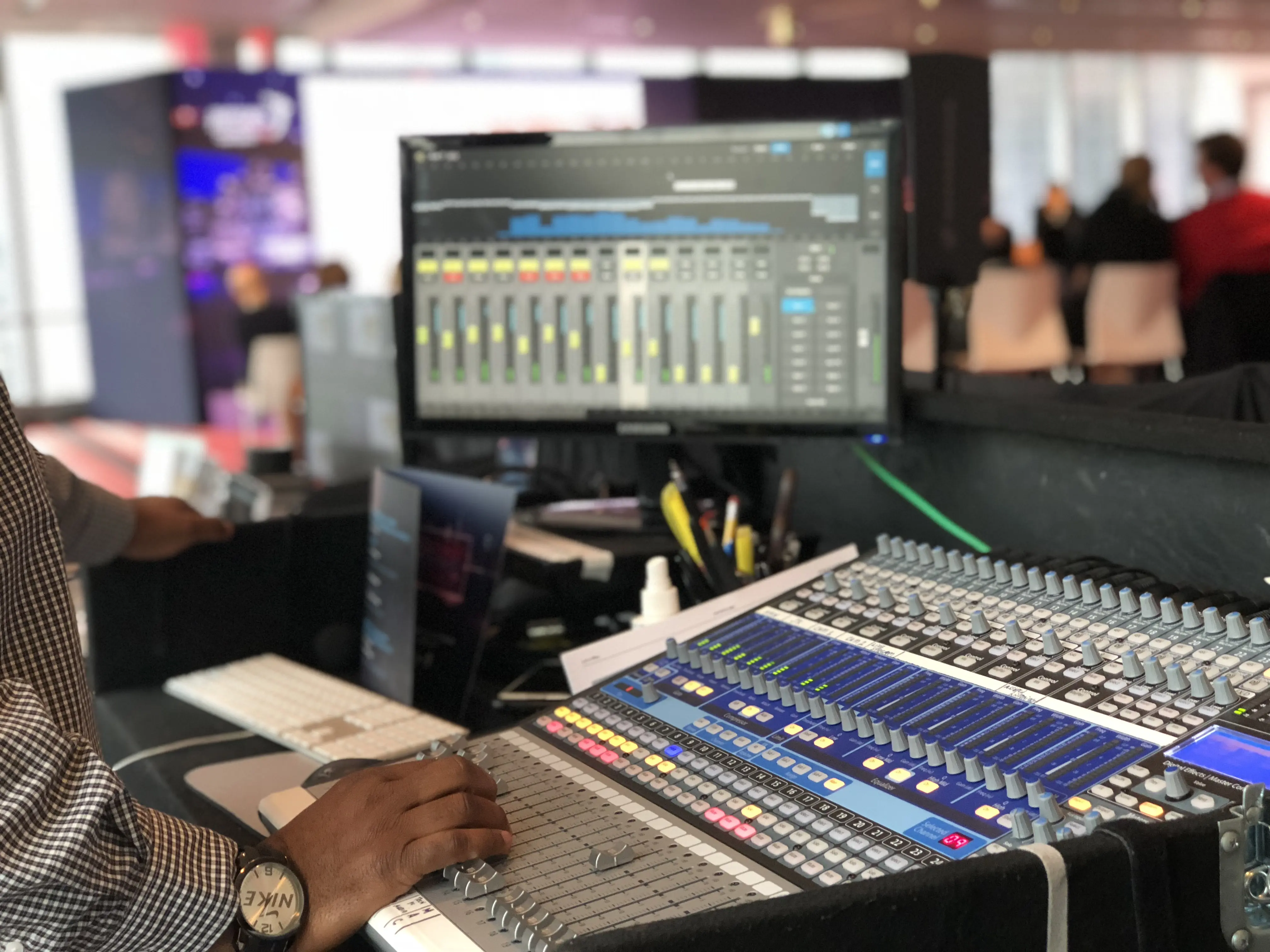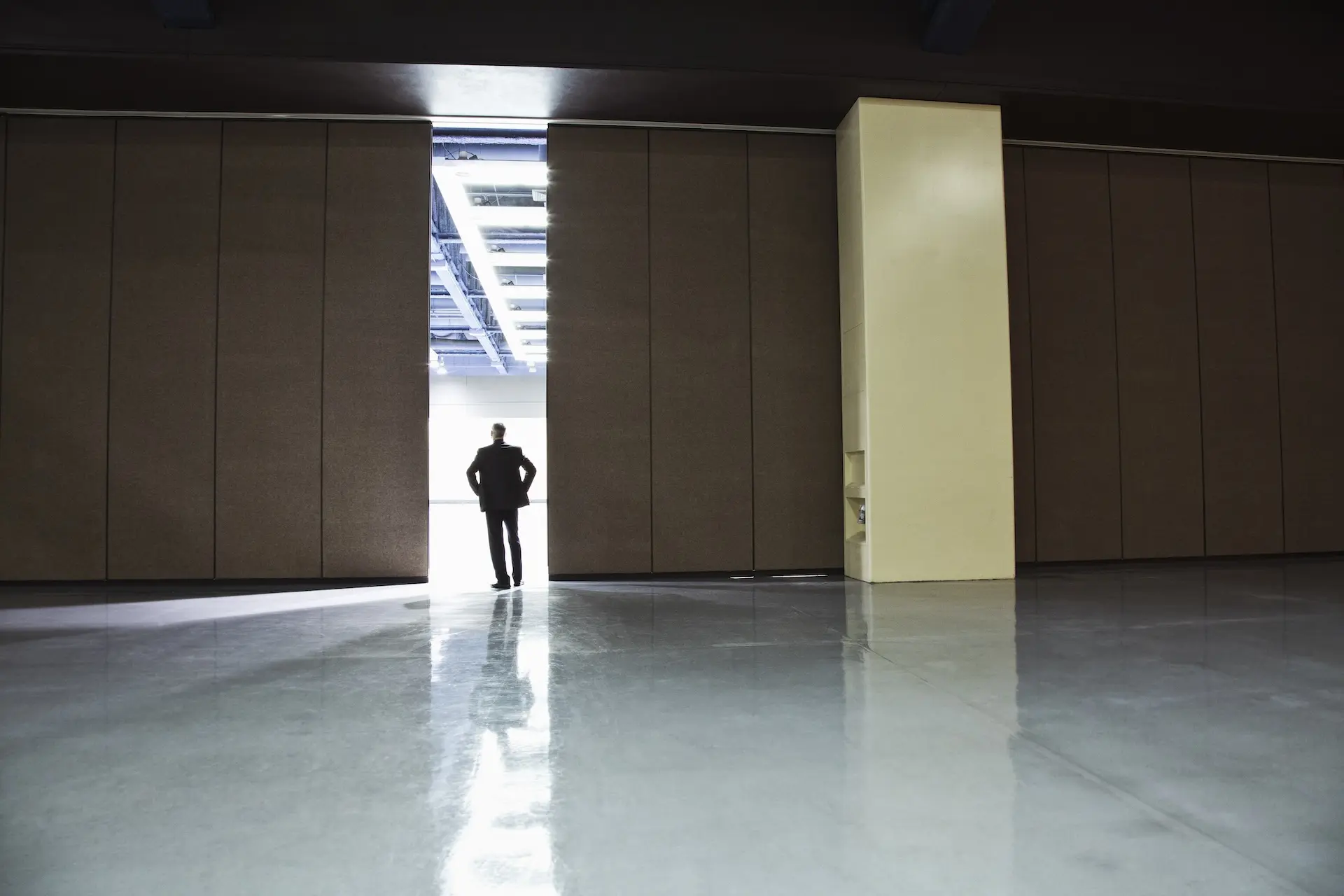You’re in the early stages of planning an event with both general sessions and breakouts. If the breakouts are running simultaneously, each one needs a dedicated space and has AV needs. In a city like NYC where event space is in high-demand (and high in price), renting additional rooms or extending the length of your conference to accommodate each breakout, not to mention renting the additional AV equipment you’ll need to support them, starts to feel like a waste of your resources – especially when there is a huge general session space full of AV gear that is sitting unused during breakouts.
If you’re in a hotel or a traditional conference center, you may be in luck – because this is where airwalls come in.
What are Airwalls?
Picture a large general session space at a hotel or a conference center. Now, picture two retractable walls dividing that space into three equally sized sections. The large room you had is now usable for three separate (and smaller) sessions that can run simultaneously.
That is the magic of airwalls.
Airwalls are room dividers that move on a track and can be expanded or retracted fairly easily and quickly, allowing organizations to reconfigure a large space into several smaller spaces. Depending on the venue, organizations can divide spaces into a variety of different sizes, allowing sessions of vastly different sizes and scopes to run at the same time in rooms that fit their individual needs.
Most venues have floor plans listed on their websites, and for spaces with airwalls, those floor plans will include the airwalls, clearly defining where they are, how they break down the space, and what the size of each section of the room will be once the airwalls are in place.
We most regularly see airwalls used for breakout sessions. While the general session will use the ballroom as is, or, for smaller groups, just the middle section, airwalls allow the same room to be used for breakout sessions when the general session isn’t running. How many rooms it’s divided into is determined by two factors: how many rooms the organization needs and how many airwalls the space has.
One of the most notable ways airwalls save organizations money is by reducing the number of rooms they’ll need to use if they aren’t doing a full venue buyout – or by allowing them to stretch the amount of space further so that more sessions can take place simultaneously and the overall length of the event can be reduced.
But that’s not the only way airwalls save money. By keeping sessions in close proximity to the general session space, there may be big opportunities to maximize your AV setup.
Determining Your AV Needs for Breakouts.
The first step in determining what AV you’ll need for your breakouts is to figure out how many sessions you plan to have running simultaneously and how many attendees you’re expecting in each one. This will let you know how you need to divide the space, and give you some initial clues as to what each breakout will need. A session with only 15 attendees will need much less space, smaller screens, and less audio equipment than a session with over 100 people – so it’s important to know what you’re expecting from each breakout.
Next, consider the purpose and style of each session. While your general session is probably in traditional auditorium seating, breakout sessions may be focused on networking, hands on demos, or a workshop. This will change how the seating is organized and what your presenters will need to effectively work with their audience.
If there is one breakout that is particularly large or has high production needs, keeping it in the general session space is a great way to avoid paying for a lot of extra equipment or labor to set it up.
Once you know what you want the breakouts to look like, you’ll have a better idea of what AV you need – and how you can optimize what you’ve already got.
Maximizing Your Setup.
You can’t close the airwalls if rigged equipment, power lines, or unmovable set pieces are blocking their paths. Because of this, the first step in maximizing your space is making sure your stage design allows the airwalls to close with little or no changes to your general session space
Next, ask your AV team to use equipment that will be easily reconfigurable so that it can be used for different sessions. Because all of the equipment you’re using for the general session will already be available (and, theoretically, not being used during breakouts), you’ll need less additional equipment to facilitate the smaller sessions. If you have 20 wireless microphones for the general sessions, but each breakout will only need one or two, it may be possible to use the general session microphones during breakouts as well, as long as the AV is designed with that in mind.
Make sure to ask your AV team what gear can easily be moved and reconfigured. It’s possible that, with a few small changes to your set ups, there will be opportunities to get a lot more bang for your buck.
In the right venue, and with the right AV team, airwalls can help you stretch your space, equipment, and budget. If you’re planning an event and want to make the most of your AV set up, our team would love to help you find the perfect venue and create a floor plan that helps you get the most of your AV.





